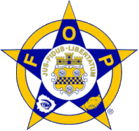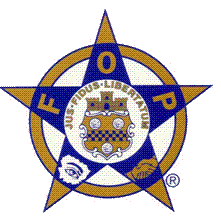|
History of The Fraternal Order of Police In 1915, the life of a policeman was bleak. In many communities they were forced to work 12 hour days, 365 days a year. Police officers didn't like it, but there was little they could do to change their working conditions. There were no organizations to make their voices heard; no other means to make their grievances known.
This soon changed, thanks to the courage and wisdom of two Pittsburgh patrol officers. Martin Toole and Delbert Nagle knew they must first organize police officers, like other labor interests, if they were to be successful in making life better for themselves and their fellow police officers. They and 21 others "who were willing to take a chance" met on May 14, 1915, and held the first meeting of the Fraternal Order of Police. They formed Fort Pitt Lodge #1.
They decided on this name due to the anti-union sentiment of the time. However, there was no mistaking their intentions. As they told their city mayor, Joe Armstrong, the FOP would be the means "to bring our grievances before the Mayor or Council and have many things adjusted that we are unable to present in any other way...we could get many things through our legislature that our Council will not, or cannot give us."
And so it began, a tradition of police officers representing police officers. The Fraternal Order of Police was given life by two dedicated police officers determined to better their profession and those who choose to protect and serve our communities, our states, and our country. It was not long afterward that Mayor Armstrong was congratulating the Fraternal Order of Police for their "strong influence in the legislatures in various states,...their considerate and charitable efforts" on behalf of the officers in need and for the FOP's "efforts at increasing the public confidence toward the police to the benefit of the peace, as well as the public."
From that small beginning the Fraternal Order of Police began growing steadily. In 1917, the idea of a National Organization of Police Officers came about. Today, the tradition that was first envisioned 90 years ago lives on with more than 2,100 local lodges and more than 350,000 members in the United States. The Fraternal Order of Police has become the largest professional police organization in the country. The FOP continues to grow because we have been true to the tradition and continued to build on it. The Fraternal Order of Police are proud professionals working on behalf of law enforcement officers from all ranks and levels of government.
About the Star
The Star is the symbol of authority with which all police officers are more or less invested.
Midway between the points and center of the star is a blue
field. The points are gold, which indicates the position under
which we serve .
The background is white, white being the virgin or unstained color, represents purity; among our many efforts, one is to allow nothing of a corrupt nature to be injected into our Order, therefore blue, gold and white are our colors.
In the three uppermost blue fields are the letters F.O.P., which is the monogram of our Order, the "Fraternal Order of Police"
In the blue field, in the lower left-hand corner, is the open eye, the eye of vigilance, the ever watchful eye, which notes danger, and offers protection to the public, asleep or awake.
In the lower right-hand corner, is the hand clasp, which denotes friendship. The circle surrounding the Star midway, indicates our never ending and never tiring efforts to promote the welfare and advancement of this order.
In a half circle over the centerpiece is our motto, written in Latin, Jus, Fides, libertatum, which translated means Law is a safeguard of Freedom.
In the center of the star is the seal for Fort Pitt, which reminds us of where the first efforts were put forth to establish this highly necessitated Order.
|
 |
Medina County Fraternal Order of Police Lodge #204 |
 |
